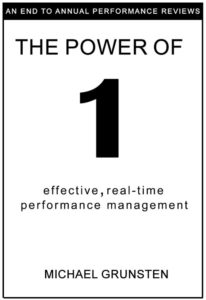
“For Want of a Nail”
For want of a nail the shoe was lost
For want of a shoe the horse was lost
For want of a horse the rider was lost
For want of a rider a battle was lost
For want of a battle the kingdom was lost
In the manufacturing business, skipping or not executing a simple step in a procedure correctly can result in material losses, missed shipping schedules, quality errors, and the loss of customers. In fields like transportation and health care, the consequences can be far more serious. The loss of a kingdom may be a bit extreme, but this proverbial rhyme strikes a chord in any endeavor.
Tracing the causes of failures in our operation told us that not all of our documented procedures were being followed correctly, consistently, and in some cases at all. Apparently our employee screening, training and supervision wasn’t enough to assure that our procedures would be executed as they should.
In order to get our processes under control we created a computer based auditing and scoring method to verify that all procedures on our production floor were being executed. If a procedure at a workstation was executed as it should. The operator at that station scored a “1” if it was or a “0” if it was not. After thirty days of auditing and scoring all procedures were being executed correctly throughout the operation.
With the manufacturing processes under control we then turned to reducing support department delays. We applied the same scoring method to make sure that mechanics were keeping machines running; if a machine was operating, the mechanic scored a 1, if bins were filled material handlers scored 1’s. The method was working well and soon we were applying it to every area of the operation.
Individual monitoring and grading was the key to everyone paying closer attention to their work. To our surprise the system became quite popular. The comments were very positive:
“I know exactly what is expected of me, no surprises.”
“This proves I’m doing a good job.”
“I like being scored, it motivates me.”
One of our engineers suggested linking scores. The scores for individual operators on a production line were combined and became their supervisor’s score. Supervisors’ scores were combined into their manager’s scores. The managers’ scores formed a single score for the plant indicating how well the entire operation was following procedures.
Most important, the proof the system was working was in the significant improvement in our quality, delivery performance, and costs.
Rejects were virtually eliminated, our deliveries were all on schedule, and our costs were all within budget. At that point we thought we couldn’t be more pleased. But soon we were. Our Human Resource manager pointed out that scores we kept served to replace the ineffective and unpopular annual performance reviews. Someone with a score of 100 was doing everything he or she was assigned to do. Everyone’s performance was linked to everyone else’s. It created a real sense of teamwork. In the case of the production lines, no one wanted to let their “team” down—it was important to score that “1” when the auditor came around.
As one operator put it: “We have a team thing going on here. We like contributing to the score for our group. None of us want to let our team or supervisor down.”
There are many books on improving processes and procedures. Unfortunately the people who read them are executives on airline flights not the ones who benefit the most, those on the front lines. But generally they’re too busy doing their work to hear what’s in those books. To our surprise our production supervisors were taking the lead. Improving processes meant that it would be easier for operators to score “1’s.” That meant a higher score for the supervisor. Improving processes became personal.
We found a way to make people accountable before the fact rather than after a catastrophe. We made the much talked about, but elusive switch, from “reactive” to “proactive action.”
Read on to find out how it all came about. It’s a good story.